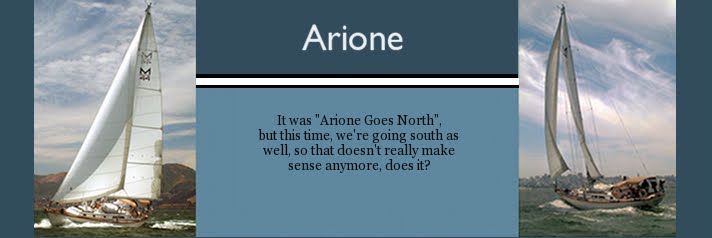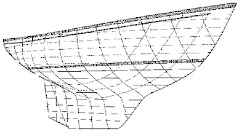Raphael, the harbormaster here, suggested that we take a trip to San Javier. We have friends who'd done it, but they went with a guide, in a jeep. We'd assumed we'd need to do the same, but Raphael assured us that the road would be fine for our rental car, so off we went.
San Javier is ~33 kilometers off the main highway. We were pleasantly surprised to find that, contrary to what our guide book told us, the road was very, very new - and paved. Hilly, yes; narrow, yes; twisty, most definitely, but paved. Until it wasn't, but that wasn't until about kilometer 28, so not too far to subject the rental car (a Jetta with a completely blown suspension - gee, I wonder how
that could have happened..?) to an unpaved road.

San Javier is a very small town, and sort of an oasis in the mountains.


There is a river that is largely underground, but that comes to the surface just east of there, where it's been dammed to create a reservoir for the town and the agriculture there. They grow all sorts of things, but we saw mostly olives and dates.

The irrigation system is all gravity fed from the river into surface canals. When the farmers want to divert the water to one canal or another, they just put a pile of dirt in front of the canal they want to block off (the canals are maybe 6-10" across). It's quite ingenious.


This burro came over to say "hi"

The church itself is spectacular.
Exterior - front



Interior:




The altar:



The road on the way out of town goes quite near the stream and reservoir. We stopped to take some pictures of the stream, and saw a horse standing in the reservoir, apparently munching on cress growing in the water. I hope the water's only for irrigation purposes!



On the way up to San Javier, we'd noticed a sign for cave paintings. We noticed it too late to turn off, so we were on the lookout for it on the way back. The paintings were hard to see, and even harder to take pictures of, but here's one of the more distinct ones.

The paintings were in another oasis-y area. People obviously camp here - there were remains of several fires. A hike up the canyon would have been interesting, but it was getting late and we wanted to be off the highway before dark, so some other time...

 Nope, not moving.
Nope, not moving.


























































